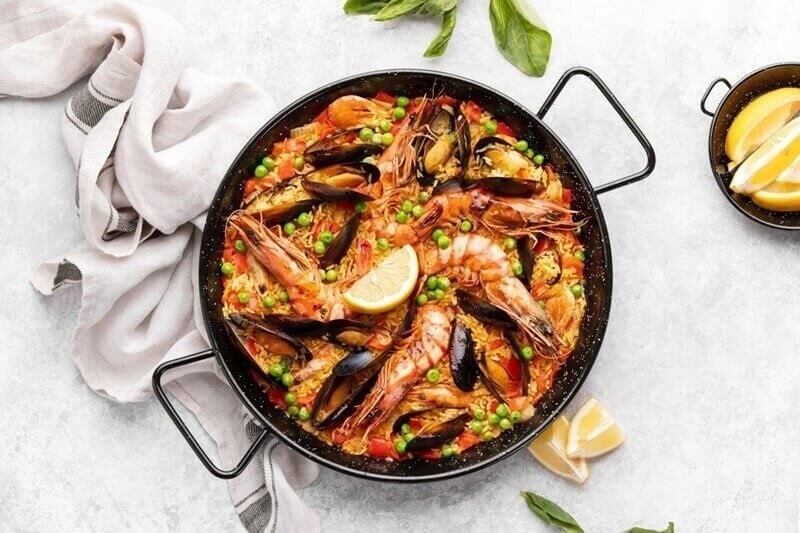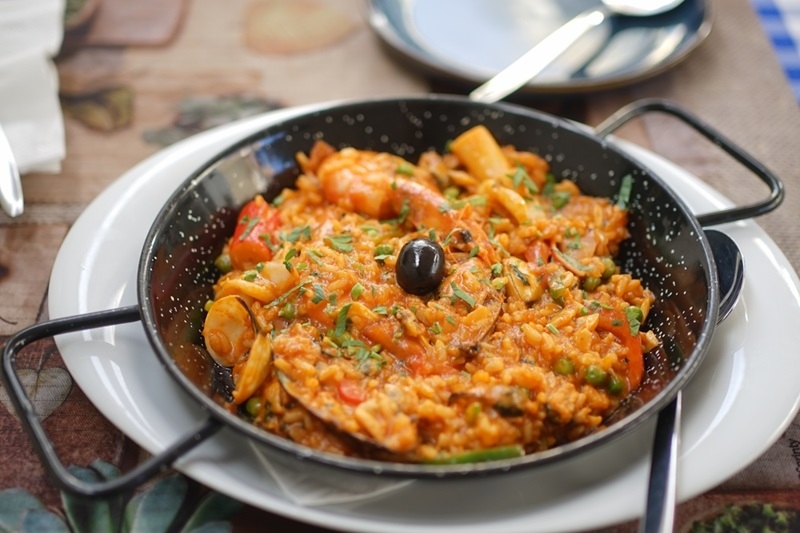
Seasoning a paella pan is the inspiration for making real, flavorful Spanish paellas at domestic. Whether it’s your paella pan's first use otherwise you’re searching to refresh a vintage one, finding the right machine is vital. Many cooks wonder about solid iron vs metal paella pan alternatives and how to save you from rusty paella pan problems whilst keeping top overall performance. In this complete guide, we’ll cover everything you want to understand about properly seasoning a paella pan, proper paella cookware care, and seasoning tips for beginners to ensure your pan lasts an entire life and gives exceptional paellas whenever.
Seasoning a paella pan isn't quite a way of existence—it’s about characteristics. Proper seasoning creates a natural non-stick surface that enhances the taste of your dishes and protects your cookware from rust. For first-time customers, skipping this step can bring about sticky rice, uneven cooking, and a pan that deteriorates speedy.
Seasoning a paella pan guarantees you get excellent outcomes, whether you’re cooking a seafood paella, mixed meat paella, or a vegetarian model. This step is mainly critical even as considering solid iron vs metal paella pan variations, as each material requires care; however, in any other case to heat and seasoning.

Choosing the right cloth is important before you start seasoning. Cast iron pans hold warm temperatures longer and distribute them evenly, making them best for traditional, slowly cooked paellas. However, they require extra in-depth care to save you from rust. Steel pans are warmer and are lighter; however, additionally, they also need proper seasoning to prevent sticking and rusting.
Knowing whether or not you've got cast iron or metal influences your seasoning method. For solid iron, more than one layer of oil seasoning is regularly needed, at the same time as metal pans usually require a thorough preliminary seasoning but much less frequent protection later on. Regardless of the cloth, seasoning a paella pan efficiently is the first step in paella cookware care.
To maintain durability, it's crucial to perform an initial seasoning while using your paella pan for the first time. Here is a clear, detailed guide:
To remove any coatings or residue from the production unit, wash your new pan in warm water with mild soap before using it. Pat it absolutely dry with a clean towel. Any water left on the floor can cause rust, especially on steel pans.
Rub a beneficial, however even, layer of immoderate-smoke-thing oil, which consists of vegetable or sunflower oil, across the complete pan floor. Make certain the oil reaches each corner, consisting of the rims.
Place the oiled pan on a medium-warm temperature for 10–15 minutes. For solid iron, this could take longer. Heating the oil permits it to bond with the steel, forming the protective, non-stick layer.
Once heated, allow the pan to cool thoroughly. Wipe off any excess oil with a smooth material. Congratulations—you’ve finished the initial seasoning. Repeat this technique a second time for metal pans or a 3rd for cast-iron in case you want the most durability.
Many beginners pass seasoning or make mistakes that shorten their pans’ lifespan. For novices, here are some crucial seasoning tips:
These hints ensure a long-lasting paella pan and facilitate the seasoning process.
Rust is the most common enemy of paella pans, particularly for steel or cast-iron models. Here’s a way to save you from rust paella pan troubles:
By following those steps, your paella pan can live rust-free for years.
Cleaning a paella pan entails more than just seasoning it. Structural integrity, flavor, and non-stick function are all preserved with proper cleansing and safety.
If you renovate your pan properly, it'll live in pinnacle form for many years.
There are sophisticated seasoning techniques for people who wish to enhance their paella game:
These techniques require greater time but result in a tremendously non-stick, rust-resistant floor best for true paella dishes.
Once your paella pan is properly prepped, it’s equipped for cooking. Follow these tips to get great results:
A properly-seasoned paella pan not only protects your cookware but also brings out the genuine flavors in every dish.
Q: Can I bypass seasoning my metallic paella pan?
Q: How often ought I re-season my pan?
Q: Can I use soap on a propane pan?
Q: Is seasoning awesome for a cast-iron vs a steel paella pan?
Seasoning a paella pan is crucial for the best cooking, lengthy-lasting performance, and rust prevention. By knowing solid iron vs metal paella pans, following paella cookware care pointers, and using proper seasoning pointers for novices, your pan will provide years of scrumptious, proper Spanish dishes. Start your paella journey with a bit of luck and experience each flavorful chunk out of your expertly pro pan.
This content was created by AI